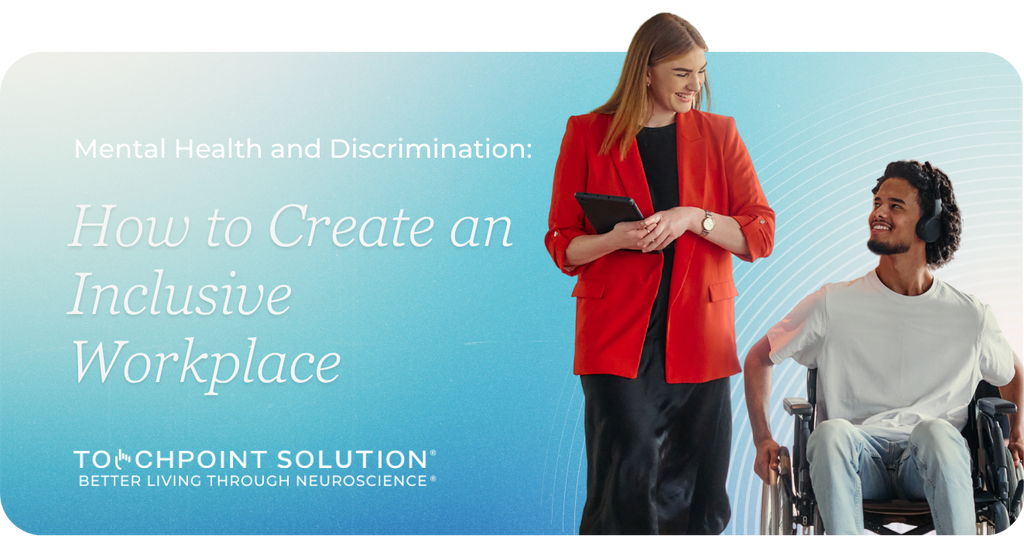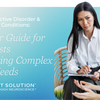Mental Health and Discrimination: How to Create an Inclusive Workplace

Workplace culture has a direct impact on employee mental health — and for individuals from marginalized groups, that impact can be especially complex. Discrimination, whether overt or subtle, is a significant and often overlooked driver of chronic stress, burnout, and psychological distress in professional environments. (Source)
Workplace discrimination isn’t just unfair — it’s harmful. A recent longitudinal study from the MIDUS national survey found that employees who experience discrimination report elevated levels of psychological distress and lower job satisfaction over time. These outcomes can ripple across teams, leading to increased absenteeism and reduced productivity.
Why Inclusive Workplaces Are Mentally Healthier Workplaces
Creating an inclusive workplace goes beyond DEI statements. It means cultivating a culture where employees — especially those from underrepresented backgrounds — can bring their full selves to work without fear of judgment, tokenization, or isolation.
In inclusive environments, employees are:
- More likely to seek support for mental health
- Better able to engage meaningfully in their roles
- Less susceptible to burnout or disengagement
- More trust in leadership and workplace wellness resources
For sectors such as school districts and healthcare organizations where diverse teams work in high-stress, people-facing roles, fostering this kind of culture can have a direct impact on patient care, client relationships, and team performance.
Strategies to Address Discrimination and Support Mental Health
Organizations can proactively reduce the mental health toll of discrimination by embedding support at both the cultural and individual levels.
1. Normalize Mental Health Conversations
Make mental well-being a part of everyday workplace dialogue. Host workshops, invite diverse speakers, and provide platforms for shared stories. This helps build psychological safety, especially for employees who may otherwise feel unseen or unheard.
2. Incorporate Real-Time Support Tools
Many experiences of discrimination happen in subtle, day-to-day interactions. Tools like TouchPoints, which use gentle, alternating micro-vibrations to regulate the body’s stress response, offer immediate relief in high-tension moments. Whether in a meeting, classroom, or clinical setting, TouchPoints can help reduce the physiological effects of stress — enabling better focus, self-regulation, and confidence.
3. Evaluate and Adjust Policies
Review leave policies, accommodations, and wellness benefits to ensure they account for the unique stressors marginalized employees may face. Flexible mental health support, trauma-informed leadership training, and consistent bias response protocols go a long way in creating trust.
4. Support Inclusive Leadership
Train leaders to recognize the signs of race- or identity-related stress, and encourage them to model inclusive behavior — not just in what they say, but in how they lead, listen and allocate opportunities.
TouchPoints' Six Dimensions of Health
Building inclusive, mentally healthy workplaces aligns with several of TouchPoint’s Six Dimensions of Health, especially:
- Healthy Thinking – Encouraging openness and equity in cognitive and cultural perceptions
- Mindfulness – Promoting emotional awareness in real-time with tools like TouchPoints
- Healthy Relationships – Fostering connection, trust, and safety within teams
- Workplace Environment – Creating spaces that actively reduce bias, stress, and psychological harm
When wellness strategies are inclusive by design, everyone benefits — and organizations build cultures that last.
Build an Inclusive Culture That Supports Mental Well-Being
Looking to enhance mental wellness and inclusion across your organization?
Book a consultation today to discover how TouchPoints can enhance your workplace culture by reducing stress and fostering emotional regulation across diverse teams.
Ready to take action? Shop TouchPoints today and give your people the tools they need to feel supported, focused, and empowered — no matter their background.
-
Posted in
Minority Mental Health, Stress, Workplace Culture




